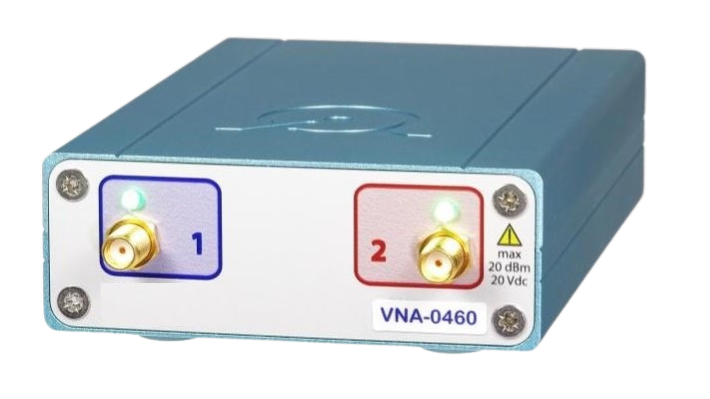February 26, 2024 - The Complete Guide to Vector Network Analyzers
In the intricate world of electrical engineering, precise measurement tools are paramount for the development, testing, and optimization of radio frequency (RF) and microwave circuits. One such indispensable instrument is the Vector Network Analyzer (VNA). The VNA is a cornerstone in the analysis of network parameters, offering detailed insights into the performance characteristics of RF components. This comprehensive guide aims to elucidate the principles, functionalities, and applications of VNAs, using the VNA-0460EBN from Berkeley Nucleonics & MegiQ as a reference point.

What is a Vector Network Analyzer?
A Vector Network Analyzer is an advanced test instrument that measures the complex impedance, phase, and magnitude of RF signals. Unlike its scalar counterpart, which only measures magnitude, the VNA provides a vector (magnitude and phase) analysis, enabling engineers to fully characterize RF components and systems. The VNA-0460EBN exemplifies this capability, offering a broad frequency range and high precision, making it an essential tool for RF and microwave measurements.
Key Features of VNAs
Frequency Range
The frequency range is a defining characteristic of any VNA. It determines the spectrum over which the device can perform measurements. The VNA-0460EBN, for example, is designed to cover a wide frequency range, accommodating various applications from simple circuit prototyping to complex system analysis.
S-Parameters
S-Parameters, or scattering parameters, are the bread and butter of VNA measurements. They describe how RF energy scatters or reflects from a network under test. A VNA measures these parameters to provide insights into how a device behaves under different conditions, thereby facilitating the optimization of its performance.
Dynamic Range
The dynamic range of a VNA indicates the range over which it can accurately measure signal reflection and transmission. A high dynamic range, as seen in the VNA-0460EBN, allows for the measurement of both very strong and very weak signals, crucial for analyzing devices with high return losses or very low signal transmission.

Applications of Vector Network Analyzers
VNAs are employed in a myriad of applications across various industries. Here are some common uses:
- Telecommunications: For antenna design, cable and connector characterization, and wireless system development.
- Semiconductor Manufacturing: In testing components like amplifiers and mixers.
- Material Management: To analyze the dielectric properties of materials at different frequencies.
- Education and Research: VNAs like the VNA-0460EBN serve as educational tools for teaching RF principles and for conducting research in universities and laboratories.
How Does a VNA Work?
The basic operational principle of a VNA involves generating a known RF signal, which is then transmitted through the device under test (DUT). The reflected and transmitted signals are measured by the VNA, analyzing their magnitude and phase relative to the input signal. This process allows the VNA to calculate the S-parameters, providing a comprehensive view of the DUT's characteristics.
Vector Network Analyzers play a crucial role in shaping, assessing, and refining the functionality of RF and microwave components and systems. By providing detailed measurements of signal magnitude and phase, these analyzers empower engineers with a profound insight into how devices operate. This understanding paves the way for the creation of more effective and groundbreaking designs. The VNA-0460EBN from Berkeley Nucleonics & MegiQ stands as a testament to the progress in VNA technology, delivering a multifaceted and accurate instrument suitable for a diverse array of uses. As technological advancements continue to unfold, the importance of VNAs in verifying the dependability and efficacy of RF systems is set to increase, further establishing their essential place in the toolbox of electrical engineering. Explore our range of VNAs to discover how they can enhance your projects: https://www.
